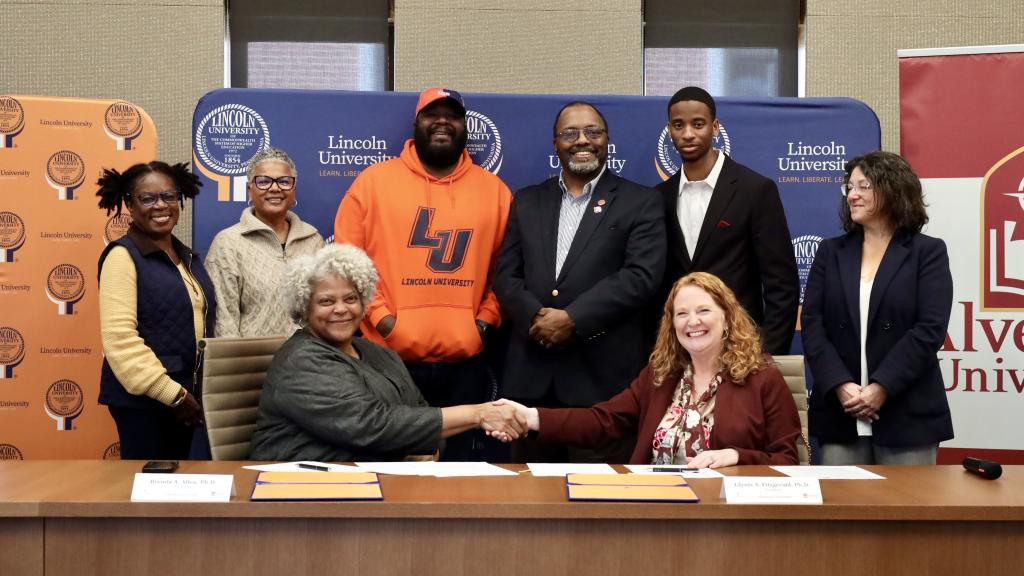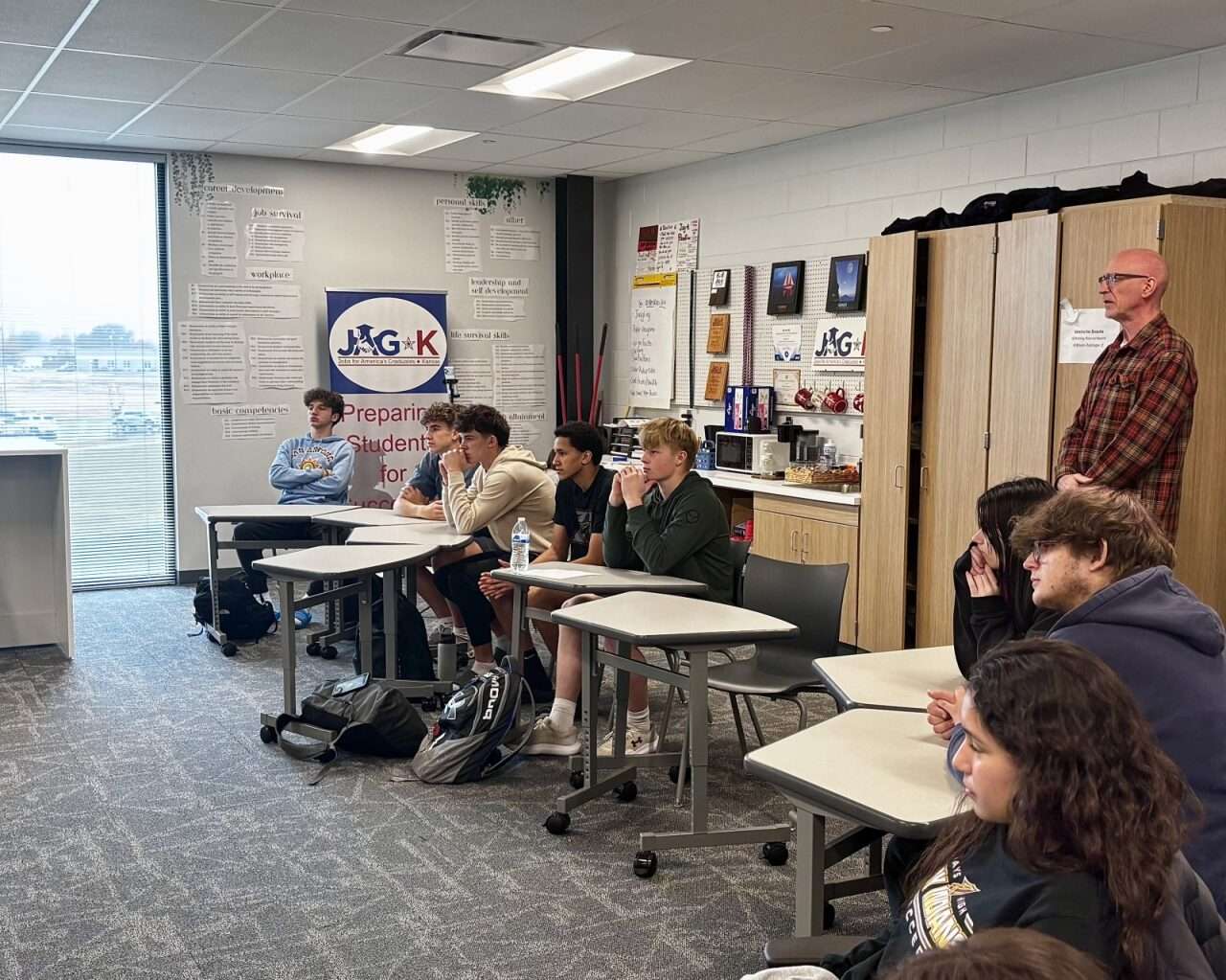Alvernia, Lincoln University partner to expand graduate education and experiential learning opportunities – Alvernia University

University Partnership Advances Sustainable Development Goals
Introduction: A Strategic Alliance for Sustainable Futures
- Alvernia University and Lincoln University have initiated a strategic partnership to expand pathways for graduate education and experiential learning.
- This collaboration directly supports the achievement of several United Nations Sustainable Development Goals (SDGs), including those related to education, economic growth, health, and innovation.
- The agreement exemplifies SDG 17 (Partnerships for the Goals) by uniting public and private higher education institutions as “co-investors in the common good” to foster regional development and student success.
Fostering Innovation and Economic Growth (SDG 8 & SDG 9)
- The partnership leverages Alvernia’s O’Pake Institute for Economic Development & Entrepreneurship and Lincoln’s Lincubator business development hub to promote SDG 8 (Decent Work and Economic Growth) and SDG 9 (Industry, Innovation, and Infrastructure).
- A student-powered, client-service model will support local entrepreneurs and small businesses, fostering innovation and strengthening the regional economy.
- Graduate Assistantship: The Chester County Economic Development Council has funded an annual Graduate Assistantship at the O’Pake Institute for a qualified Lincoln University graduate.
- Applied Learning: The Graduate Assistant will receive training and hands-on experience in business planning, financial services, and technology transfer projects.
- Mentorship: The role includes supervising and mentoring undergraduate students working in the Lincubator, building a pipeline of skilled innovators and leaders.
Enhancing Quality Education and Reducing Inequalities (SDG 4 & SDG 10)
- This initiative is fundamentally aligned with SDG 4 (Quality Education) by creating accessible and equitable opportunities for lifelong learning.
- By establishing clear articulation pathways from an HBCU to advanced graduate programs, the partnership actively works to reduce inequalities (SDG 10).
- O’Pake Fellows Program: The partnership replicates a model where students work directly with businesses, faculty, and regional partners, gaining invaluable hands-on experience.
- Future Pathways: Alvernia and Lincoln plan to expand the collaboration to create undergraduate pathways into bachelor’s degrees in electrical, mechanical, and industrial engineering.
Promoting Health and Well-being (SDG 3)
- The agreement makes a direct contribution to SDG 3 (Good Health and Well-being) by creating a dedicated pipeline for training future healthcare professionals.
- Alvernia’s College of Health Sciences will reserve seats in key graduate programs for eligible Lincoln University graduates who meet academic criteria.
- Doctor of Physical Therapy: Up to 2 seats reserved.
- Master of Science in Athletic Training: Up to 3 seats reserved.
- Master of Science in Occupational Therapy: Up to 5 seats reserved.
- Master of Medical Science in Physician Associate Studies: Up to 2 seats reserved.
Analysis of Sustainable Development Goals in the Article
1. Which SDGs are addressed or connected to the issues highlighted in the article?
The article highlights a partnership between Alvernia University and Lincoln University that connects to several Sustainable Development Goals (SDGs). The primary goals addressed are:
- SDG 4: Quality Education: The core of the partnership is to expand graduate education and create learning pathways for students.
- SDG 8: Decent Work and Economic Growth: The initiative focuses on entrepreneurship, supporting small businesses, and providing students with hands-on skills and employment opportunities through graduate assistantships, contributing to regional economic development.
- SDG 17: Partnerships for the Goals: The entire article is about a collaboration between a private university, a public university, and an economic development council, exemplifying a multi-stakeholder partnership for common goals.
- SDG 3: Good Health and Well-being: The agreement reserves seats for graduates in various health science programs, directly contributing to the development of a future healthcare workforce.
- SDG 9: Industry, Innovation, and Infrastructure: The focus on innovation centers like the “Lincubator,” business development, and future plans for engineering programs supports the goal of fostering innovation.
- SDG 10: Reduced Inequalities: By creating specific, funded pathways for graduates of Lincoln University, a Historically Black College or University (HBCU), the partnership actively works to provide equal opportunities and access to advanced education and professional development.
2. What specific targets under those SDGs can be identified based on the article’s content?
Based on the article’s content, several specific SDG targets can be identified:
- Target 4.3 (under SDG 4): “By 2030, ensure equal access for all women and men to affordable and quality technical, vocational and tertiary education, including university.” The agreement directly addresses this by creating clear “articulation pathways” and reserving seats in graduate programs for Lincoln University graduates, thus ensuring access to tertiary education.
- Target 4.4 (under SDG 4): “By 2030, substantially increase the number of youth and adults who have relevant skills, including technical and vocational skills, for employment, decent jobs and entrepreneurship.” The O’Pake Institute’s “student-powered, client-service model” and the Fellows Program provide students with “hands-on” experience with “entrepreneurs, small businesses, [and] regional partners,” directly building relevant skills for employment and entrepreneurship.
- Target 8.3 (under SDG 8): “Promote development-oriented policies that support productive activities, decent job creation, entrepreneurship, creativity and innovation…” The partnership’s support for ventures through “Lincoln’s Lincubator, an innovation center and business development hub,” is a direct effort to foster entrepreneurship and innovation.
- Target 10.2 (under SDG 10): “By 2030, empower and promote the social, economic and political inclusion of all…” The partnership between Alvernia and an HBCU is an explicit action to “open doors, not build walls,” promoting the inclusion of its graduates in advanced degree programs and economic opportunities.
- Target 17.17 (under SDG 17): “Encourage and promote effective public, public-private and civil society partnerships…” The collaboration is a clear example of this target, described as a partnership where “public and private institutions act not as competitors, but as co-investors in the common good.” It involves Alvernia (private), Lincoln (public), and the Chester County Economic Development Council (civil society/economic organization).
- Target 3.c (under SDG 3): “Substantially increase… the recruitment, development, training and retention of the health workforce…” The agreement contributes to this by reserving seats for eligible graduates in critical health programs, including the Doctor of Physical Therapy, Master of Science in Athletic Training, and Physician Associate Studies, thereby helping to train the next generation of “healers.”
3. Are there any indicators mentioned or implied in the article that can be used to measure progress towards the identified targets?
Yes, the article mentions or implies several quantitative and qualitative indicators that can be used to measure progress:
- Indicator for Target 4.3 & 3.c: The number of graduate program seats reserved and filled by Lincoln graduates. The article specifies these numbers: “up to 2 seats in the Doctor of Physical Therapy program, up to 3 in the Master of Science in Athletic Training program, up to 5 in the Master of Science in Occupational Therapy, and up to 2 in the Master of Medical Science in Physician Associate Studies program.” Tracking the enrollment against these reserved seats would be a direct measure of success.
- Indicator for Target 8.3: The number of businesses and entrepreneurs supported by the student teams from the O’Pake Institute and the Lincubator. The article states that “Staff and student teams will support ventures through Lincoln’s Lincubator.” Measuring the number of ventures assisted would indicate progress.
- Indicator for Target 4.4 & 8.6 (Reduce youth not in employment, education or training): The number of funded Graduate Assistantships filled annually. The article explicitly states the “placement of one qualified Lincoln University graduate annually into a fully funded Graduate Assistantship at O’Pake.” This is a clear, measurable outcome.
- Indicator for Target 17.17: The existence and continuation of the signed agreement itself is a primary indicator of a successful partnership. Furthermore, the financial contribution from the “Chester County Economic Development Council” serves as an indicator of mobilized resources from a multi-stakeholder partnership.
- Indicator for Target 10.2: The number of students from a minority-serving institution (Lincoln University) who successfully matriculate into graduate and professional programs at Alvernia University. This directly measures the partnership’s effectiveness in creating inclusive pathways.
4. Table of SDGs, Targets, and Indicators
| SDGs | Targets | Indicators (Identified in Article) |
|---|---|---|
| SDG 4: Quality Education | 4.3: Ensure equal access to tertiary education. 4.4: Increase the number of youth with relevant skills for employment and entrepreneurship. |
– Number of Lincoln graduates enrolled in Alvernia’s graduate programs via reserved seats. – Number of students participating in the O’Pake Fellows Program and Lincubator for hands-on experience. |
| SDG 8: Decent Work and Economic Growth | 8.3: Promote policies that support entrepreneurship and innovation. 8.6: Reduce the proportion of youth not in employment, education or training. |
– Number of small businesses and entrepreneurs supported by the student-powered service model. – Number of fully funded Graduate Assistantships filled by Lincoln graduates (specified as one annually). |
| SDG 17: Partnerships for the Goals | 17.17: Encourage and promote effective public-private and civil society partnerships. | – The signed agreement between Alvernia (private), Lincoln (public), and the Chester County Economic Development Council (civil society). – Financial resources mobilized (e.g., funding for the Graduate Assistantship). |
| SDG 3: Good Health and Well-being | 3.c: Increase the training and development of the health workforce. | – Number of seats reserved and filled in health science graduate programs (DPT, AT, OT, PA Studies). |
| SDG 9: Industry, Innovation, and Infrastructure | 9.5: Enhance scientific research and encourage innovation. | – Number of ventures and innovations supported through the Lincubator and O’Pake Institute. |
| SDG 10: Reduced Inequalities | 10.2: Empower and promote social and economic inclusion. 10.3: Ensure equal opportunity. |
– Number of students from an HBCU (Lincoln University) successfully accessing advanced educational and professional opportunities through the partnership. |
Source: alvernia.edu
What is Your Reaction?
 Like
0
Like
0
 Dislike
0
Dislike
0
 Love
0
Love
0
 Funny
0
Funny
0
 Angry
0
Angry
0
 Sad
0
Sad
0
 Wow
0
Wow
0
















































:focal(1500,1000)/https://media.globalcitizen.org/a6/9a/a69a4720-d8a1-4715-b596-18738d03c05c/rotary_polio_hero_image.jpg?#)







/countries/sri-lanka/photo-credit---dmc-sri-lanka.tmb-1200v.jpg?sfvrsn=dc298bcc_1#)


















